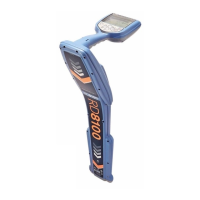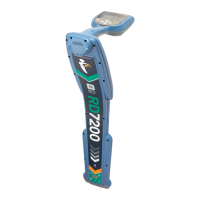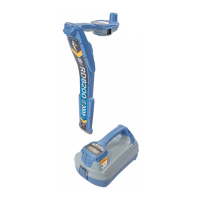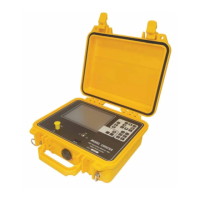RD4000 Locating System User Manual
Page 66
When the cable is not grounded at the column, open the inspection door and connect the live cable connector to
the live or neutral conductor.
The use of a street light column as a means of applying a signal to other power cables on the same electric
circuit is a possibility. The signal may be weak using this method because it may have travelled some distance
back to the sub-station and out again on the other system. With the receiver used on a high sensitivity setting it
is often possible to locate a cable, which would otherwise have been difficult or inconvenient to energise with
the transmitter signal.
Finding a good ground point
When using a direct connection, it is important get the best possible grounding for the transmitter. This provides
the lowest resistance ground path and the best output signal. If it is not possible to use the ground stake the
following are examples of good alternative ground points:
! Metal manhole covers
! Metal drainage grates
! Metal railings
! Metal fence posts
Double ended connections
Large diameter water pipes and gas distribution pipes that are laid in sections sometimes have insulated joints
between the sections and can be difficult to locate using a single ended connect. This is because when using a
single ended connection ground return, signals can often cause confusion by returning to the transmitter along
other lines. The problem sometimes occurs when return signals appear stronger than on the target line, usually
because the target line is deeper than the line carrying the return signal, or the return path may be a better
electrical conductor than the target line.
Applying a double-ended transmitter connection is a useful
technique for positively tracing and identifying a target line in a
situation such as a heavily congested industrial site, provided
there are access points at each end of the line.
Connect the transmitter to an access point on the target line.
The transmitter ground is connected with a long cable to
another access point further along the line. A complete circuit
is achieved without using ground as a current return path. The
long cable should be kept as far away as possible from the
expected route of the line.
Making a double ended connection
Connect the transmitter to an access point on the target line. The transmitter ground is connected with a long
cable to another access point further along the line. A complete circuit is achieved without using ground as a
current return path. The long cable should be kept as far away as possible from the expected route of the line.
Radiodetection supplies 50 metre/54 yard and 200 metre/218 yard extension cables for this purpose.
This method of applying the transmitter signal is ideal for positive identification of a target line. When a
connection has been made to two points on the same line, the same level of current should be detectable all
round the circuit. The receiver display should remain constant if the depth of the line does not change.
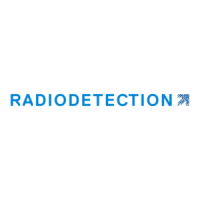
